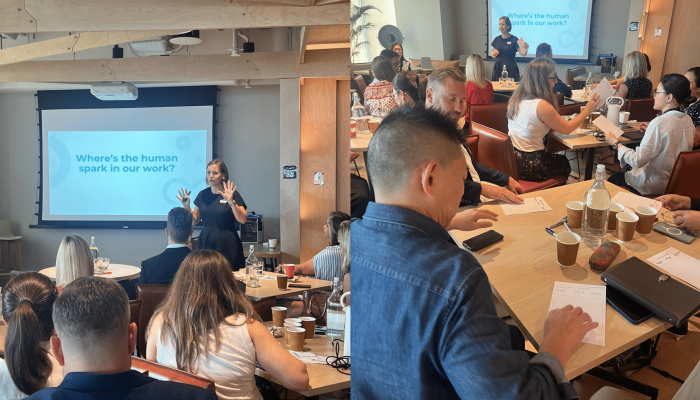As digital advertising evolves, the line between what is engaging and what is perceived as intrusive is thinner than ever. Brands today have access to unprecedented levels of data and technology, offering opportunities to craft highly personalized experiences. But this very power comes with a risk: when does personalization become over-personalization? When does data-driven advertising start to feel more like surveillance than service?
At Insider, we continuously explore the nuanced challenges of navigating this paradox. The key lies in understanding that digital engagement should feel like a conversation - relevant and timely - without crossing into territory that consumers find annoying. In this article, we’ll explore five pillars that shape the future of digital advertising and demonstrate how Insider’s platform turns challenges into opportunities for meaningful engagement.
1. Engagement is not an easy game
Building authentic engagement isn’t as straightforward as it might seem. The digital landscape is crowded, and customers are bombarded with ads that often miss the mark. True engagement goes beyond merely capturing attention; it involves delivering value in a way that resonates with the audience.
Insider enables brands to unify customer data across touch points, transforming that data into actionable insights. For example, Samsung leveraged Insider’s technology to streamline customer engagement. By integrating data across multiple platforms and using predictive algorithms, they were able to serve content that was not only personalized but also contextually relevant. This resulted in a noticeable uplift in user interaction and a significant improvement in customer satisfaction metrics, including a 275% CVR increase for campaign launch and 24% higher conversions via Web Push notifications.
“Insider helped us deliver highly-tailored experiences across our digital channels to achieve significantly higher conversion rates.” - Chief Marketing Officer at Samsung
This case exemplifies the difference between forcing engagement and nurturing it. Brands that succeed in the digital space understand that engagement is a journey, not a one-time interaction.
2. The cost of incomplete CRM data
Many brands rely heavily on their CRM systems to drive marketing strategies. While CRM data is invaluable, using it in isolation can lead to blind spots and inefficiencies. Consumers are dynamic, and relying solely on historical data might result in irrelevant or redundant offers, frustrating the very audience you aim to delight.
This is where Insider’s AI-powered recommendations come into play. Carrefour, one of the world’s largest retailers, faced this very challenge. By integrating Insider’s predictive analytics, they moved beyond static CRM data, layering in real-time behavioural insights. This shift enabled Carrefour to personalize offers dynamically, reducing redundancy and enhancing the customer experience. The results? A measurable increase in repurchase rates and improved customer loyalty.
Data without context can be dangerous. Brands that thrive understand the importance of complementing CRM data with real-time insights, ensuring that each customer interaction feels fresh and personalized.
3. Focusing on user behaviour
Understanding your customer goes far beyond knowing their name and purchase history. The real game-changer lies in recognizing their intent, their current needs, and what will resonate with them in the moment. Combining CRM data with real-time behavioural insights provides a more complete view of the customer journey, allowing for hyper-targeted campaigns that feel both relevant and timely.
Estee Lauder exemplifies this approach. By leveraging Insider’s Behavioural Segmentation tool, they were able to move beyond demographic-based targeting and focus on real-time user behaviour. This shift resulted in a 57% increase in engagement rates, as marketing strategies were now tailored to how users were interacting with their content in real time. Estee Lauder was able to address customer needs at exactly the right moment, leading to higher conversion rates and deeper brand loyalty.
The ability to respond to real-time user behaviour is what separates brands that connect from those that simply broadcast.
4. Data fragmentation: A major hurdle
Data fragmentation is one of the most significant challenges facing marketers today. With so many platforms, touch points, and tools, valuable customer data is often scattered across silos, leading to inefficiencies and missed opportunities. Without a unified data strategy, brands struggle to deliver the cohesive experiences that consumers expect.
Insider’s Cross-Channel Orchestration tackles this issue head-on by bringing together fragmented data from multiple channels into a single platform. Unilever experienced first hand the transformative power of this solution. By automating the coordination of content across various channels, Unilever not only saved valuable time but also ensured that their marketing efforts were consistent and impactful. With data integration streamlined, the brand could focus on crafting more meaningful campaigns that drove real results.
When data is unified, the potential for creating personalized and relevant experiences multiplies exponentially.
5. The power of data unification
In an era where consumers expect brands to know them and meet their needs instantly, data unification has become essential for success. Fragmented data results in fragmented experiences, leaving customers feeling disconnected. Conversely, brands that unify their data across all touch points are able to deliver seamless, personalized experiences that drive loyalty and growth.
Virgin, a company known for its innovation, turned to Insider’s AI-driven personalization engine to unify their customer data. By leveraging real-time insights, Virgin was able to launch targeted campaigns that adapted based on user behaviour, preferences, and context. The outcome was a significant improvement in campaign performance, resulting in higher conversion rates and enhanced customer satisfaction.
The message is clear: unified data is the foundation of a successful digital advertising strategy. It empowers brands to meet customers where they are and exceed their expectations at every touch point.
Conclusion: Balancing Technology with the human touch
The paradox of digital advertising lies in its potential to both delight and annoy. Brands that strike the right balance between leveraging technology and maintaining a human touch will ultimately be the ones to win over consumers. By focusing on user behaviour, unifying data, and embracing the power of automation, digital advertising can transform from a source of frustration into a powerful tool for building long-lasting customer relationships.
At Insider, we are dedicated to helping brands navigate this complex landscape, turning digital advertising challenges into opportunities for growth. Through our innovative solutions, we empower teams to exceed customer expectations, build deeper connections, and drive sustainable business success.
Want to find out more? Find out how Insider can help your business today by booking a demo with one of our experts.
Authored by Katie Morley Global Content Director Insider a partner of The Marketing Society.
Published on 12 September 2004



